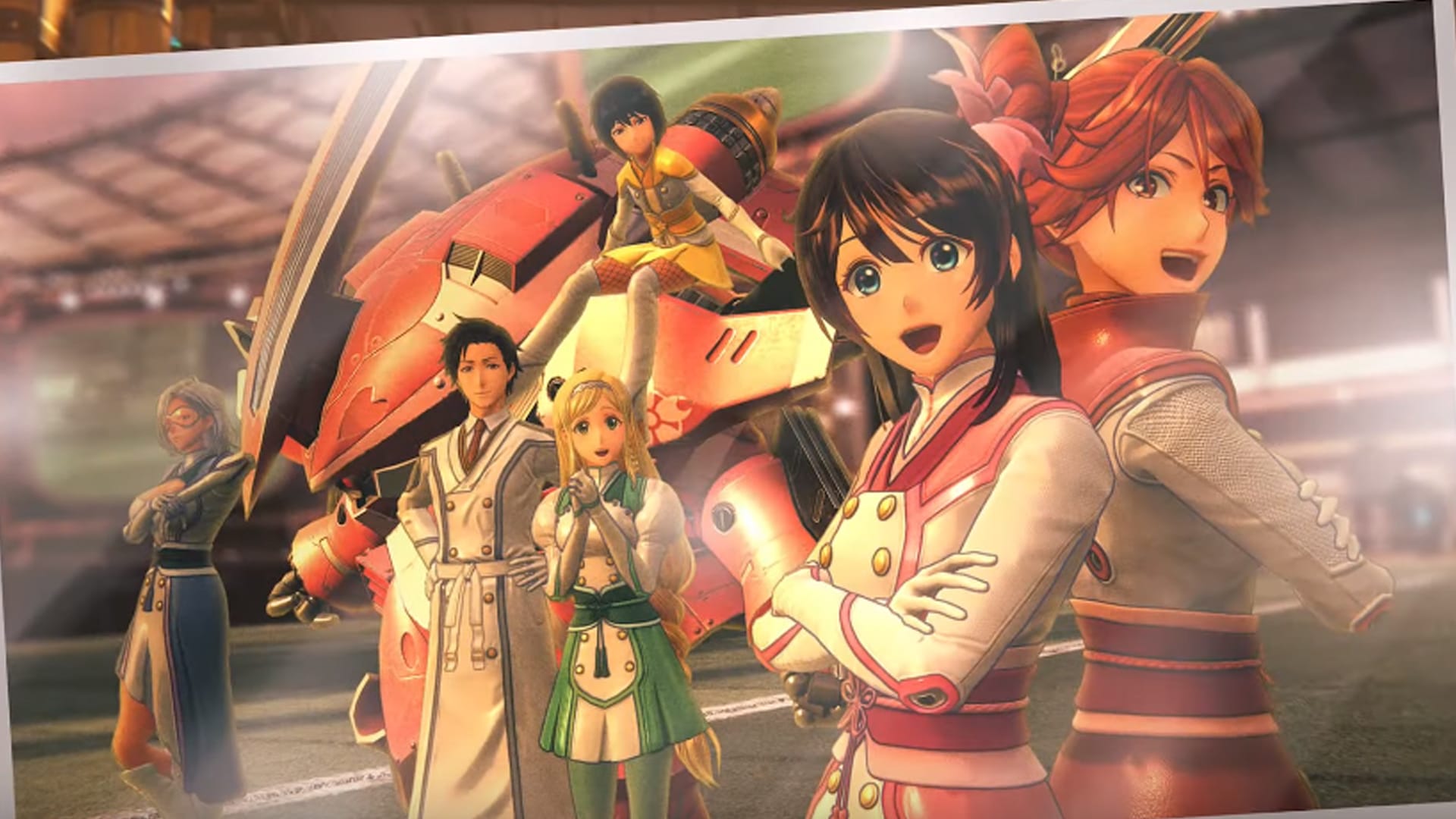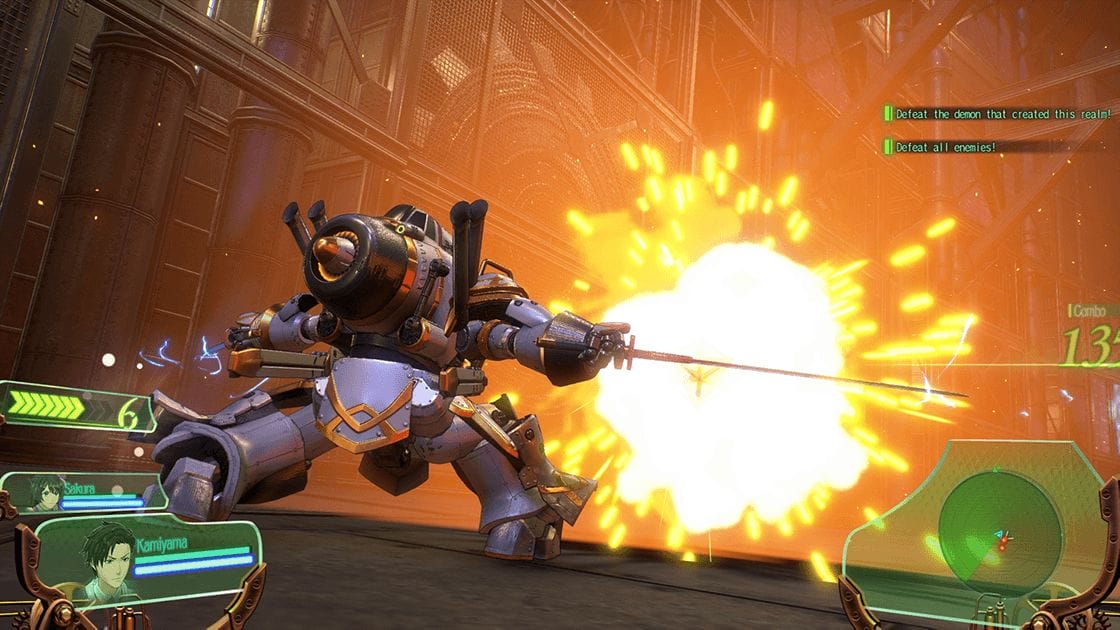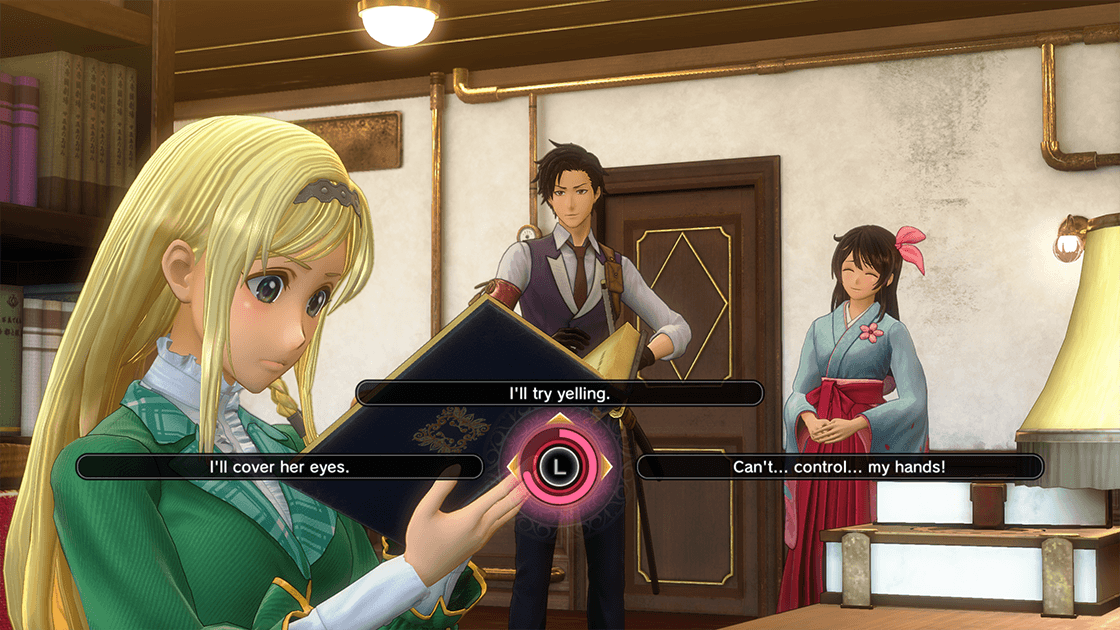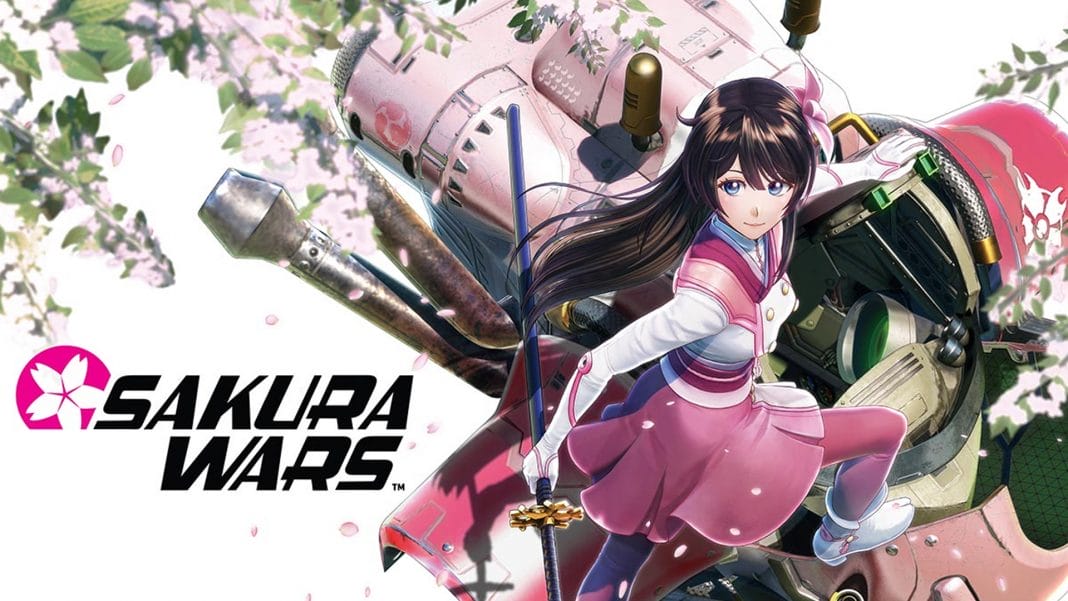While Sega would have you believe that Sakura Wars is a soft reboot, this PS4 exclusive manages to toe the line between its remarkable legacy and being accessible to newcomers with ease. There are a few stumbles that prevent it from being a perfect return for the franchise, though they do little to impact what is a surprisingly enjoyable game.
Sakura Wars is set in 1940s Taisho era Japan. The game’s rendition of Tokyo is colourful with its citizens wearing traditional Japanese and Western clothing, the mix of attire makes the world of Sakura Wars feel distinct. In addition to this, it’s packed with cozy cafes, rooftop amusement parks, and Japanese sweet shops run by owners that see you as the next guinea pig for their outrageous concoctions.
It’s also a world powered by steam. From trains to mecha known as kobu, Sakura Wars is steeped in steampunk that’s as functional as it is aesthetic. Taking place twelve years after the events of the last game, you’re put in the able shoes of Seijuro Kamiyama. A former navy officer, he’s now the manager of Tokyo’s Imperial Theatre, a once popular home for the performing arts that’s now in disarray. Keeping Tokyo entertained is just one part of the job. The other is to protect it from demon attacks with your kobu alongside the rest of your theatre crew, who just like you, are entertainers that moonlight as demon slayers in mecha.
While the premise of Sakura Wars is unique, its pacing and format are akin to anime. No surprise since past titles had a similar structure. It’s complete with intermissions, eyecatches, next episode previews, and last episode recaps.

Each episode of Sakura Wars itself features two parts of play: exploration and combat. For the former, you’ll spend a sizeable chunk of time exploring Tokyo and interacting with the staff of the Imperial Theatre and its visitors. Be it the merchant Komachi who is always looking for the next big item to sell to Reiji, the sarcastic yet thoughtful kobu mechanic, they’re a fun bunch. This extends to the main cast of characters.
From tomboy-ish shrine maiden Hatsuho Shinonome to oddball ninja Azami Mochizuki and even Seijuro’s childhood friend slash potential love interest Sakura Amimaya, they fit the usual anime tropes but that doesn’t stop them from being any less memorable. This is good when you consider that they not only produce and act in the plays the theatre puts up, but join you on your demon hunting jaunts too. They’re an interesting lot to be around.
Talking to your team is crucial. Not only does it give you details that do wonders to fill in the story, but allow you to boost morale for the second part of Sakura War’s gameplay — combat. Certain conversations allow you the option to choose your reply complete with a timer while others let you mash the X button to determine the intensity of your retort. On occasion, you’ll be tasked with retrieving an item in a set time lime too. Get these right and your crew starts off combat with improved attack and defence.
Speaking of combat, Sakura Wars forsakes the strategy RPG mechanics of past entries in favour of a real-time approach. The result is responsive action. There’s a quick dodge mechanic which if used correctly, slows down time, allowing you to pull off critical hits with ease along with a host of long and short range attacks and combos.

The moment to moment combat in Sakura Wars feels great with flashy moves and slick traversal thanks to a boost you can use to get close to foes or collect orbs that power up some of those aforementioned moves. A welcome late inclusion is the lock-on feature. This makes targeting specific enemies like flying demons or gigantic hellfiends all the more easier. Despite these wins, Sakura Wars’ combat sections falls short in some places.
For most part, you’ll control Seijuro’s Kobu with the ability to switch to another team member if you so choose. With hordes of foes to defeat, this adds some variety to the proceedings. Outside of one or two rare moments, you’re restricted to switching between Seijuro and one single chosen team member chosen for each episode. It would have been nice to swap control between every one of them, considering there are six in total, including Seijuro.
Furthermore, you’ll end up visiting similar-looking dungeons often and face off against the same boss more often than you’d like. Granted there are perfectly good story reasons for this being the case, but it’s tough to shake off the feeling of repetitiveness of these sections particularly when the rest of Sakura Wars is such a vibrant, fun affair.

Another point of concern is how certain aspects of the story is handled. Though expertly paced with hilarious dialogue for most part, a few plot points towards the end left us with more questions than answers. Perhaps to be used for another game or the new ongoing anime sequel. Sega may claim Sakura Wars to be a soft reboot, it has a lot of callbacks and references to previous entries. That said, you don’t need to have played them to understand what’s going on here.
Nevertheless, these issues were far from deal-breakers. Thanks to its infectious music, gorgeous mecha designs, and entertaining cast, Sakura Wars’ excellent production values made up for its lack of finesse in other areas, making my 20-odd hours in Taisho era Tokyo a treat.
Sakura Wars proves you can breath new life into an old franchise. Hopefully we’ll see more games in the series from Sega. If you own a PS4 and have a hankering for something different, Sakura Wars is well worth checking out.




